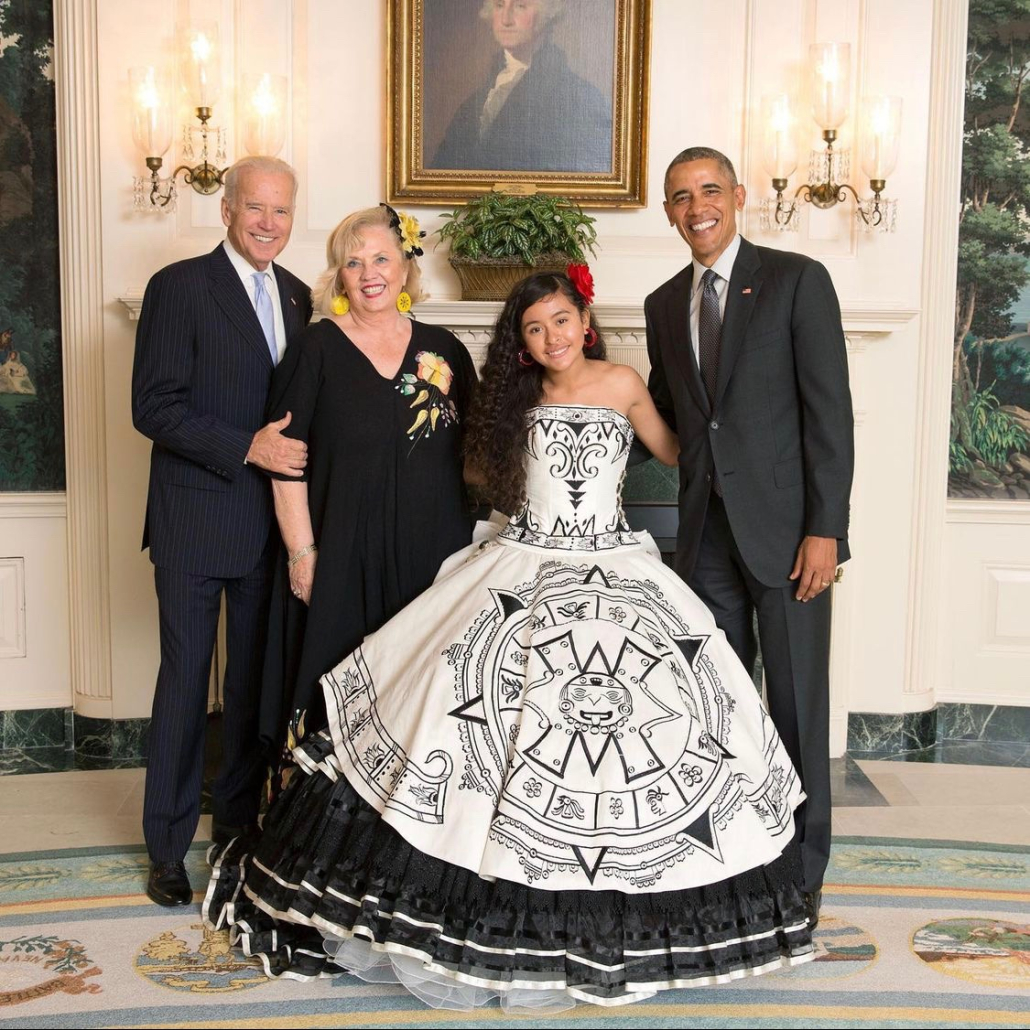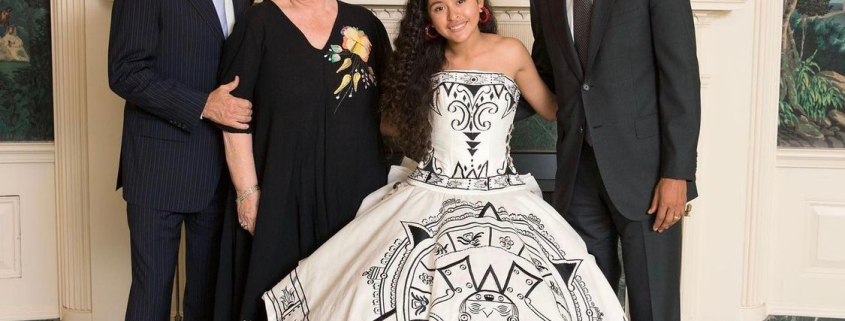Alondra Santos brings the best of both worlds

Mexican regional mariachi and classic American pop are genres rarely associated with one another, except in the case of sophomore and singer-songwriter Alondra Santos. Santos, with her history as a mariachi performer and her love for pop music, hopes to one day create her own distinct style of music that can perfectly encapsulate both genres.
Santos was born in El Monte, Calif. and raised in both South Jordan, Utah and South Central. Santos began singing at the age of two and said her family influenced her and the music she sang.
“My grandma on my mother’s side introduced me to regional Mexican music and artists like Selena Quintanilla and Rocío Dúrcal, the classics, and that’s how I started,” Santos said.
Santos began performing mariachi on television at the age of nine and made her debut with the show “Tengo Talento, Mucho Talento.” She then went on to participate in “La Voz Kids,” “Sábado Gigante,” “America’s Got Talent,” “La Voz… México” and is currently participating again in “Tengo Talento, Mucho Talento.”
“I started doing more and more shows and then came AGT, and I mean, honestly, each show is super unique. The experience is unbelievable,” Santos said. “You form amazing bonds and friendships, and you get to meet new people and get to go to places you never thought you would be at. I never thought I would be singing at Radio City Music Hall at 13 years old.”
Because of Santos’ history as an artist on television, she gained popularity and a following at a young age. This following allowed her to sing on major platforms and even at the White House’s Cinco de Mayo celebration at age 14. Santos performed a hour and half long set of classic mariachi songs including “Cucurrucucú Paloma,” “Aires del Mayab” and “La Charreada.”
“It was all regional Mexican music, all mariachi,” Santos said. “I met the President [Obama] and I met the former Vice President [Biden] … in the Oval Office. That was a wild experience, and I didn’t think I was going to do that.”
Santos cited music — especially mariachi — as one of the primary ways she stays connected to her Mexican roots, but she feels heartbroken to see the genre falling behind.
“It’s a beautiful genre that, unfortunately now I feel like is dying out,” Santos said. “There’s not a lot of artists that represent the genre as they did back in the day. If we think about popular music, even in Spanish, it’s pop music or R&B in Spanish. It’s definitely underrated.”
Being a mariachi singer, Santos wants nothing more than to help bring the renaissance of mariachi to the forefront. From adding “little flips and little melismas in the weirdest places,” Santos tries her best to honor and celebrate heritage in all the music she creates. She also said that she often tries to mesh genres like mariachi, pop and R&B to create her own style.
“In a mariachi song, I want to add flips and melismas. But that’s not mariachi,” Santos said. “A lot of people are not used to hearing that, but you know I want the music and sound to still be authentic, but I like to add my own little spice to it.”
Santos is currently majoring in vocal arts performance at the Thornton School of Music and is learning how best to train her voice and perfect her own sound. Being bilingual and having a large knowledge of traditional Mexican music allows Santos to fully explore more than one discipline of performance.
“Alondra has the Spanish language at her beck and call, and we have been able to explore a lot of Spanish classical songs with her because of the language that is just such a part of her,” said Elizabeth Hynes, associate professor of vocal arts and Santos’ individual voice instructor. “I’ve had a lot of students that have had beautiful voices through all the years that I’ve taught here, but it’s much rarer to have somebody who actually will communicate a text and will understand a text to communicate it as an actress, and Alondra has that talent.”
Hynes and Santos meet one-on-one for one hour a week and have established a close student-mentor relationship. Hynes’ current goal with Santos is to continue refining her voice and teach her voice habits that will keep her voice healthy for a long time. While Hynes hasn’t necessarily studied or sung traditional Mexican music herself, she has adapted her curriculum with Santos to focus also on Mexican classical composers and songs.
“These texts are very rich. They’re passionate and all about love and betrayal.” Hynes said. “The interesting thing about Alondra is that I usually am not able to assign that repertoire in the freshman year. But because she had that language ability, I was able to do it. It really is based on the fact she has that language as a bilingual speaker.”
Besides being a confident and vivacious mariachi singer Santos, is an adored friend and a colleague people can trust and rely on to have deep conversations.
“[Santos] has been a really great friend and also another great Latinx colleague to have especially at a predominantly white institution and a predominantly white school — Thornton in USC,” said Emmanuel Yoque, one of Santos’ friends and a sophomore majoring in vocal arts performance. “It’s been great because we can relate to [the same] struggles and language. It’s just really great having her as a friend.”
Santos is currently working on new projects and plans to release a single titled “Te Di Mi Vida,” produced by David Pena, as early as November.

